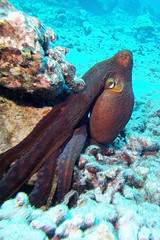![]()
![]()
![]()
Use LEFT and RIGHT arrow keys to navigate between flashcards;
Use UP and DOWN arrow keys to flip the card;
H to show hint;
A reads text to speech;
40 Cards in this Set
- Front
- Back

What is Biology? |

the science of life. |
|
|
Four Core Themes [of Life] |
1. Exhibit cellular organization. 2. Exhibit a mechanism for heredity (DNA). 3. Exhibit adaptions to produce unique features as a result of evolution. 4. Conserve key features during evolution. |
|
|
Atoms |
the smallest units of matter which cannot be divided by normal chemical and physical means.
|
|
|
Molecules |
two or more atoms joined together. |
|
|
Organelles |
specialized structure in the cytoplasm of cells that provide essential cell functions. |
|
|
Cells |
smallest units of life. |
|
|
Tissues |
groups of similar cells working together to provide a specific function. |
|
|
Organs |
layers of different tissue types working together to provide a specific function. |
|
|
Organ-Systems |
different organs working together to accomplish a common goal. |
|
|
Organism |
a complete living thing. |
|
|
Species |
groups of similar organisms capable of interbreeding and producing fertile offspring. |
|
|
Population |
all of the different species living in the same location. |
|
|
Community |
all of the different populations [of species] living in the same location. |
|
|
Ecosystem |
interactions of the community with the physical (abiotic) environment. |
|
|
Biosphere |
all regions above, on, and below earth's surface where organisms live. |
|
|
Homeostasis |
maintenance of a relatively stable environment no matter what is going on outside. |
|
|
Metabolism |
all of the chemical reactions occurring in the body necessary to sustain life. |
|
|
Growth |
increase in the number of cells or the size of the organism. |
|
|
Development |
changes in the state of cells, tissues, organs, and organisms. Results in organisms with a defined set of characteristics. |
|
|
Reproduction |
necessary for the propagation of a species. |
|
|
Evolve/Evolution |
changes in allele frequencies in populations of organisms over time. May result in adaption to the environment. |
|
|
Respond to Stimuli |
organisms respond to environmental changes. |
|
|
Taxonomy |
the grouping of species. |
|
|
3 Domains of Life |
1. Bacteria (prokaryotic) 2. Archaea (prokaryotic) 3. Eukarya (eukaryotic) |
|
|
Properties of Bacteria |
1. Prokaryotic 2. Most primitive organisms on Earth. 3. Mostly unicellular prokaryotes. |
|
|
Properties of Archae |
1. Prokaryotic 2. Unicellular Prokaryotes 3. Many live in extreme environments (extremophiles) |
|
|
Eukarya |
1. Has DNA enclosed within a nucleus. 2. Larger cells. 3. Have membrane-bound organelles. |
|
|
Taxonomy |
1. Domain - most inclusive and diverse 2. Kingdom 3. Phylum 4. Class 5. Order 6. Genus 7. Species - most exclusive |
|
|
Science |
the observation, identification, experimental investigation, and theoretical explanation of natural phenomena. |
|
|
Taxons |
groups that new species are placed into. |
|
|
Deductive Reasoning |
Type of logic where one goes from a general statement to a specific conclusion. |
|
|
Inductive Reasoning |
involves going from a series of specific cases to a general statement. |
|
|
Hypothesis |
scientifically plausible explanation for your observation. MUST BE TESTABLE.
|
|
|
Parts of the Scientific Method |
1. Observation 2. Question 3. Literature Search 4. Hypothesis 5. Make Predictions 6. Experimentation 7. Collect Data 8. Conclusions 9. Theory 10. Paradigm |
|
|
Discovery-Based Science |
gathering information for the sake of gathering it. Often leads to hypothesis. |
|
|
Changes in the _______ affect the _______. |
genome; proteome |
|
|
Genome |
the complete genetic composition of an organism or species. |
|
|
Genomics |
technology/techniques that provide the ability to analyze the DNA sequence of genomes. |
|
|
Proteomes |
the complete protein composition of cells or organisms. Encoded by the genome. |
|
|
Proteomics |
techniques used to analyze the proteome of a single species. |

